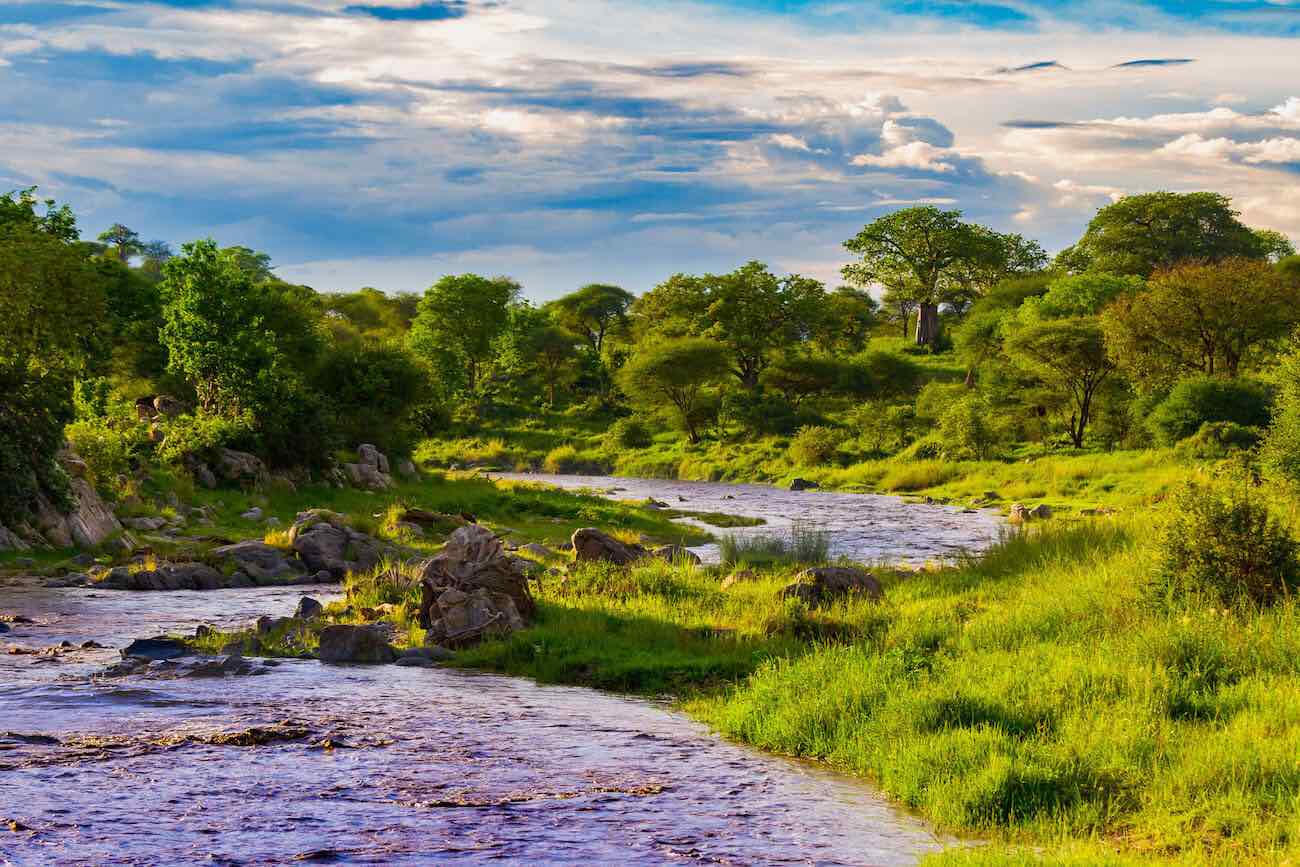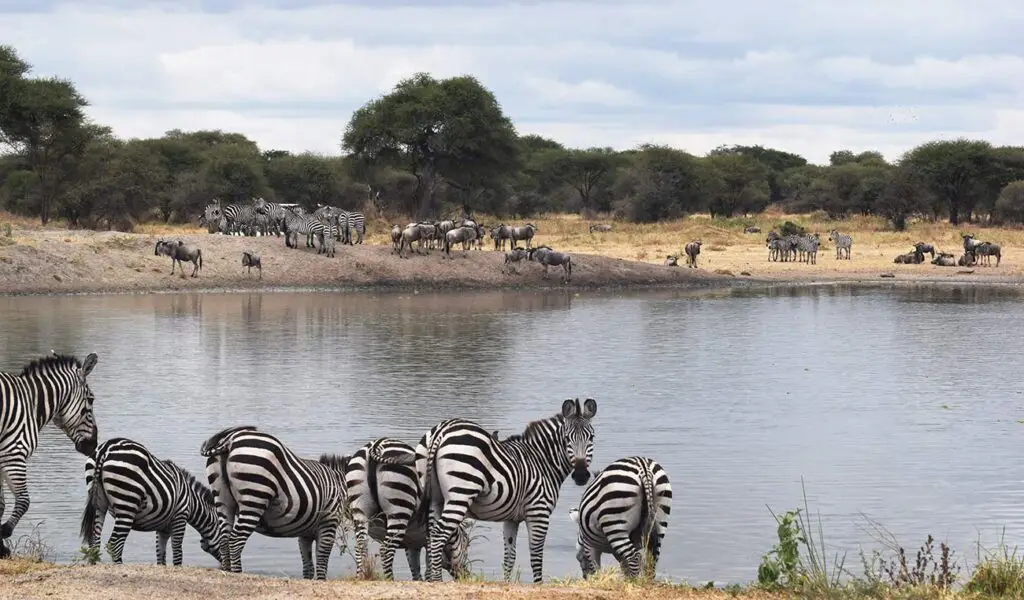Tarangire National Park
A Wildlife Paradise in Tanzania
Destination Overview
Tarangire National Park, located in the northern part of Tanzania, is a hidden gem known for its rich wildlife, stunning landscapes, and unique atmosphere. Covering an area of over 2,600 square kilometers, it is one of the largest national parks in Tanzania and is renowned for its diverse ecosystems, which include open savannahs, swamps, and baobab-dotted hills.
Tarangire is a prime safari destination that offers an authentic African wildlife experience, with fewer crowds compared to other popular parks in the region, such as the Serengeti and Ngorongoro Crater.
Northern Tanzania
Attractions Found in Tarangire National Park
Tarangire National Park is famous for its exceptional natural beauty and remarkable wildlife. Some of the top attractions include:
Baobab Trees
The park is known for its iconic and ancient baobab trees, which create a unique landscape, often referred to as “The Land of Giants.” These trees are a photographer’s dream and provide a surreal backdrop for wildlife sightings.

Tarangire River
The river that runs through the park is a vital water source for the animals during the dry season. It attracts large herds of elephants, buffaloes, giraffes, and other wildlife, making it a prime location for game viewing.

Swamps and Wetlands
The Tarangire River and its surrounding wetlands are vital for wildlife, especially during the dry season. The wetlands are home to a variety of bird species and offer incredible opportunities for birdwatching.

Elephant Herds
Tarangire is often referred to as the “elephant sanctuary” of Tanzania. The park is home to one of the largest concentrations of elephants in East Africa, making it a haven for elephant lovers.

Things to Do / Activities in Tarangire National Park
Tarangire National Park offers a variety of activities to enhance your safari experience. Whether you’re a first-time visitor or a seasoned traveler, these activities will bring you closer to nature:
EXCELLENTVerified Unforgettable Safari Experience – Highly Recommended! At first, we were a bit nervous about making the payment, as it was our first time booking a safari online. But everything turned out perfectly and we’re so glad we trusted this company—it was the best decision we made!From start to finish, the experience was amazing. Our guide, Elikano, was incredibly knowledgeable, friendly, and helpful with everything we needed. Thanks to him, we saw so many animals—lions, elephants, giraffes, zebras, and much more. Every day was full of unforgettable moments and breathtaking views of nature.This company is truly professional and reliable. They delivered exactly what they promised and more. We felt safe, well taken care of, and fully immersed in the beauty of the African wilderness.We highly recommend traveling with this company if you’re planning a safari—you won’t regret it!Verified Spectacular and surprising Tanzania and with Karibu Safari Adventure The Best Safari Experience We Could Have Dreamed Of!From the moment we arrived, everything about this safari was beyond our expectations. The company was incredibly professional, organized, and attentive to every detail. We were a bit nervous before making the payment, but they earned our trust completely—and we’re so glad we believed in them!Our guide, Elikano, was simply the best. His knowledge of the wildlife, landscapes, and local culture made the entire experience even more special. He went above and beyond to make sure we were comfortable, informed, and most importantly—close to the action. Thanks to him, we saw an incredible variety of animals including lions, elephants, cheetahs, giraffes, zebras, and more.Every game drive felt like a new adventure, and every moment was magical. The care, passion, and professionalism of this team truly made this trip unforgettable.Verified BEST SAFARI YOU CAN BOOK This is the best guide you will ever find. Eli has an eagles eye, he will spot animals from an impressive distance. You can book your safari with him with total confidence. If you are also looking for tanzanites, you can trust the place that he will take you so you can get your certificate and all the docs in order. We didn’t expect we can learn that much about the culture because of him. Thanks for everythingVerified Amazing Safari Experience We had an absolutely amazing 5-night tailor-made safari organized by ELIKANO from Karibu Safari Expeditions, and it exceeded all our expectations!Our adventure took us through the breathtaking landscapes of Tarangire National Park, Serengeti and the iconic Ngorongoro Crater, where we had the chance to see incredible wildlife up close. From majestic elephants, Leopard and lions to countless zebras and giraffes, every moment was unforgettable.A huge shoutout to our guide, Ellikano, who was simply fantastic! His deep knowledge, sharp eye for spotting animals, and passion for nature made the experience even more special. He ensured we got the best views, shared fascinating insights, and made our safari both educational and exciting.Everything was perfectly planned—from smooth logistics to comfortable accommodations and delicious meals. We couldn’t have asked for a better experience!Thank you, Karibu Safari Expeditions and Ellikano, for making this an unforgettable journey! We highly recommend them to anyone looking for a well-organized and personalized safari adventure. 🦁🐘🌿✨
Contact Info
- Arusha Tanzania
- +255 793 877 775
- info@serengetimufasatours.com
Follow Us
Userful Link
Top Experiences




